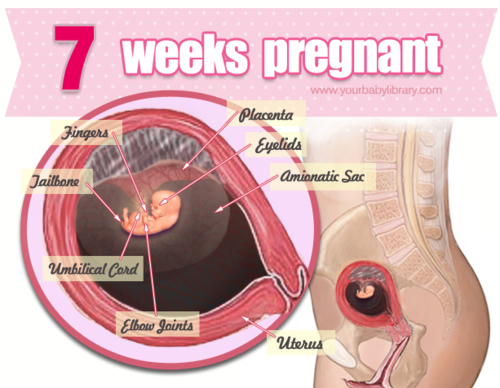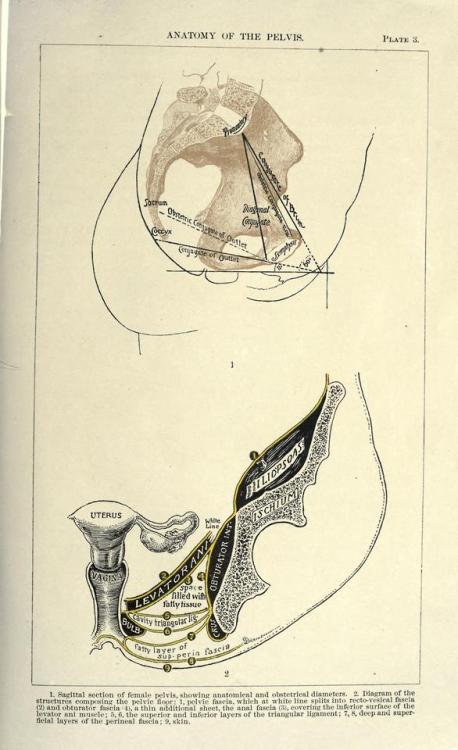#obstetrics

Hormone Implants: (Nexplanon, etc…) 99% Effective Single rod, effective for 3 years. Advise patient to check implant site regularly. Side effects: bleeding irregularities, emotional lability, depression, weight gain. Risk for infertility and ectopic pregnancies. Hormone Injections: (Depo-provera) 98-99% Effective Effective for 14 weeks, advise patient to return every 12 weeks for their IM. Advise…


Day 204 of 366
2 weeks down for my Obstetrics-Gynecology rotation! Being on 24-hour duties every three days has been really tiring. Nevertheless, I’m blessed to be in one of the best OB-Gyne training institutions in the country! So so thankful for residents and consultants who go beyond their ways to teach us medical interns. I’ve practiced my PE and internal examination skills multiple times in the ER, labor room, and delivery room. In just a span of 2 weeks, I was able to deliver babies and do episiorraphies while being supervised by my resident. I can really say that there’s never a boring duty shift when you’re in OB! My day is always action-packed and full of pregnant mothers celebrating the beginning of life with their newborns.
ig:studyingdoc


196 of 366
Doing some light review before I start my Obstetrics-Gynecology rotation tomorrow! I’m excited and kinda scared at the same time.
ig:studyingdoc



195/366
Preparing for my next rotation - Obstetrics and Gynecology! These are my previous notes I made before for pelvic anatomy I miss those days when I had enough time to put a lot of effort into my notes!!!
ig:studyingdoc
Fig. 55. Diagrammatic scheme of regions of abdomen. A system of obstetric medicine and surgery.1884,
Post link
You’re 7 weeks pregnant and your wee-one is growing more baby-like at a light speed pace! About the size of a grape, the adorable arms and legs that will someday soon be splashing around in the tub have sprouted. While 7 weeks pregnant, your baby’s organs are growing more and more every day. http://bit.ly/YKp3t7
Post link
I’ve been seeing pro-aborts throw around high risk/crisis pregnancy situations as reasons why they support abortion. One was placental abruption…WHICH WOULD NEVER BE SAFE TO HANDLE VIA ABORTION, AND IS NOT PART OF THE PROTOCOL FOR HANDLING THIS MEDICAL CASE. [X]And this wasn’t even the only medical myth that they shared!
There are some hellish situations to be in while pregnant. There are also obstetric solutions to them that do not involve killing a human being. Feel free to search my tags to find examples.
If you claim to be pro-choice and have spread such BS, educate yourself and stop scaremongering women into dangerous abortions that are unneeded to begin with. If you are pro-life, it helps our advocacy and efforts tremendously to know basic medical facts to prevent misinformation from spreading.
Comprehensive Care for Gestational Diabetes
Women with diabetes need comprehensive care before and during pregnancy. The Diabetes and Pregnancy Program (DAPP) at UC San Diego Health, the only one of its kind in the San Diego Region, cares for the diverse population of women with diabetes in San Diego County.
DAPP is designed to provide specialized care to patients with diabetes through a multidisciplinary approach, following the California Diabetes and Pregnancy Program guidelines.
“Patients with type 1 or type 2 diabetes, or those who have recently been diagnosed with gestational diabetes, require a team of specialists to assist with a healthy pregnancy and optimize the outcome for both the patient and baby,” said Sandy Ramos, MD, director of DAPP and perinatologist at UC San Diego Health.
“For example, working with a specialist to manage blood sugar before and during pregnancy can decrease the risk of complications and make it more likely that the patient can carry the baby to term.”
Ramos and Kristen Kulasa, MD, endocrinologist at UC San Diego Health, elaborate:
Question: How common is gestational diabetes and what are the complications?
Answer: Approximately one in five women delivering babies in San Diego County begin their pregnancies with diabetes, and others develop gestational diabetes during pregnancy. These women are at risk for complications during pregnancy and after delivery, including high blood pressure, eye disease, kidney disease, too much weight gain, severe hypoglycemia (low blood sugar) and diabetic ketoacidosis (DKA).
Their babies are also at increased risk for complications, including macrosomia (high birth weight), higher rates of miscarriage and stillbirth, birth defects, delivery complications and jaundice.
Q: What type of services does DAPP provide?
A: DAPP includes six certified diabetes care and education specialists (DECS), nutritionists and social workers under the direction of two maternal fetal medicine experts. The program provides care to approximately 500 patients with gestational diabetes, 120 patients with type 2 diabetes and 40 patients with type 1 diabetes per year.
As a clinical program in the region’s only academic medical center, DAPP provides leading edge diabetes care from preconception to postpartum, utilizing the latest technology available, including the use of sophisticated insulin pumps and continuous glucose monitoring.
For example, the DAPP team has found success using “closed loop systems” to improve glucose control in patients with type 1 diabetes in pregnancy. This technology allows integration of information from the continuous glucose monitor to augment or “talk” to insulin pumps. This allows the insulin pump to increase insulin delivery if the glucose values are high or to decrease or even suspend insulin delivery if the glucose value is low.
With the aim of improving the maternal and neonatal outcomes of women with diabetes, patients are also given the opportunity to participate in clinical trials, such as the Medical Optimization of Management of Pregnancy with Overt Diabetes (MOMPOD) trial, a randomized clinical trial of Metformin as an adjunct to insulin for the treatment of type 2 diabetes.
DAPP provides primary obstetrical care for complicated patients with diabetes and is able to provide consultative services to co-manage patients with gestational diabetes.
Q: How are you addressing gestational diabetes with patients in terms of lifestyle interventions and medications available?
A: To treat gestational diabetes, we encourage nutrition changes to limit simple carbohydrates and recommend exercise. Most patients with gestational diabetes can manage their glucose values with these changes alone. If elevations persist, they can be treated with medicines like insulin and metformin. However, these lifestyle changes are important tools to continue to lower the risk of development of type 2 diabetes. Women who develop gestational diabetes have a higher risk of developing type 2 diabetes later in life.
Q: What research needs to be done to improve how diabetes is managed in pregnancy?
A: There are many new medications used for management of type 2 diabetes that haven’t been studied in pregnancy. The issue of safety of these medications needs further exploration in pregnancy. Additionally, technology, including blue tooth-enabled meters and continuous glucose monitors, commonly used in type 1 diabetes, need to be studied in other types of diabetes in pregnancy to see if they may be useful tools to improve the care of women with diabetes.
— Michelle Brubaker
Post link
This video introduces the newfound benefits and information that the ultrasound provides, particularly that ultrasounds are non-invasive for both mother and child and relatively inexpensive. Fetal growth and even potential abnormalities can be discovered as they happen in real time. All the ultrasound requires is a full bladder, to provide a water-path for the ultrasound to be viewed.
Molar Pregnancy (Hydatidiform Mole)
Molar pregnancy is an abnormal form of pregnancy in which a non-viable fertilized egg implants in the uterus and will fail to come to term (will not develop into a child). Instead, the cells divide and replicate into a growing mass (mole) of non-foetal tissue.

Molar pregnancy is a gestational trophoblastic disease in which a non-viable egg grows into a mass (tumour) in the uterus that has swollen chorionic villi.

- Can develop when a fertilized egg does not contain an original maternal nucleus.
- Usually contains no foetal tissue.
- Characterized by the presence of a hydatidiform mole (or hydatid mole).
- Approximately 20% of women with a complete mole develop a trophoblastic malignancy (malignant disease // cancer)
Complete hydatidiform moles have a 2–4% risk of developing into choriocarcinoma in Western countries and 10–15% in Eastern countries, and have a 15% risk of becoming an invasive mole.
Molar pregnancies make up 1 in 1,000 pregnancies in the US and up to 1 in 100 pregnancies in parts of Asia.
Symptoms
- Vaginal bleeding- molar tissue separates from the decidua, causing bleeding.
- Uterus may become distended by large amounts of blood, and dark fluid may leak into the vagina.
- Hyperemesis - severe nausea and vomiting due to very high levels of human chorionic gonadotropin (hCG).
- Hyperthyroidism - thyroid gland is stimulated by the high levels of circulating hCG or by a thyroid stimulating substance (ie, thyrotropin) produced by the trophoblasts.
Partial mole
Partial moles do not generate the same clinical features as a complete mole. Patients instead present with signs and symptoms consistent with an incomplete or missed abortion, including vaginal bleeding and absence of foetal heartbeat.
Support structures of the uterus. Weakening of any of these structures can lead to a uterovaginal prolapse.
Post link
Sagittal section of the uterine pelvis
Relevant muscles, bones, and organs shown, with their supporting ligaments and relative angles and measurements shown.
An American Text-Book of Obstetrics. Ed. Richard C. Norris, 1895.
Post link











